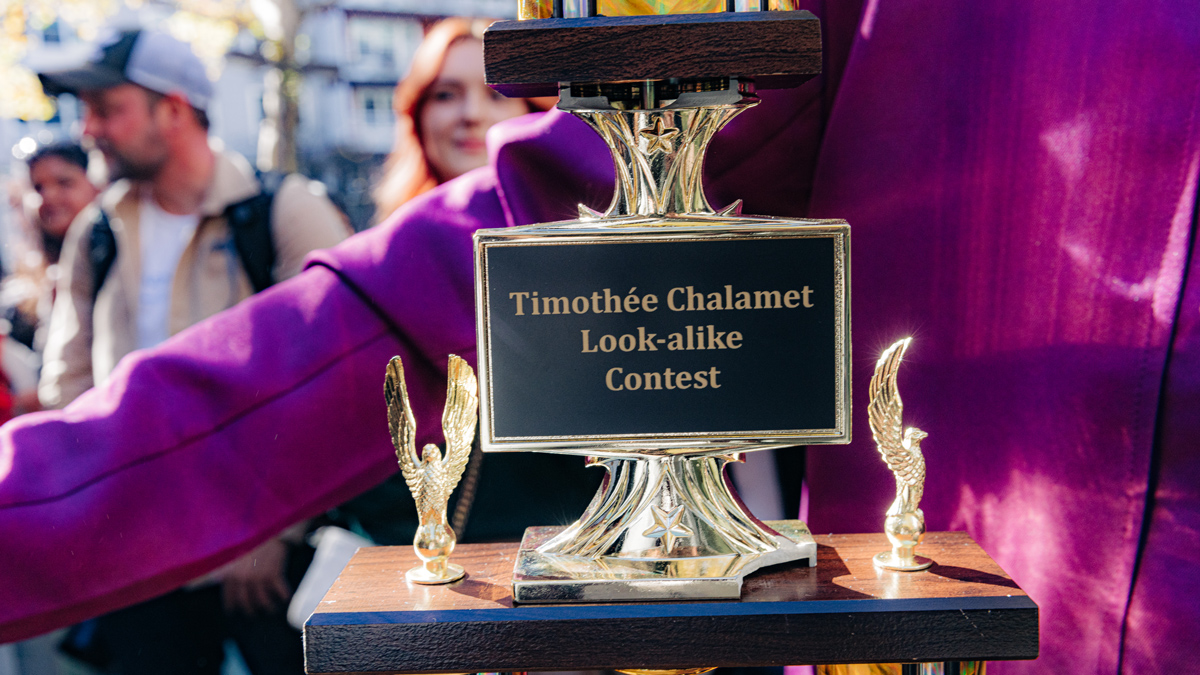In early October, I saw a post on X floating around with a flyer promoting a Timothée Chalamet look-alike competition. I thought it was a big old gag to get some attention. After looking into it, I was surprised to see there were over 900 confirmed attendees and articles from local news publishers about the event.
I immediately texted our CMO, Meridith Rojas, and said, “This feels like prime social content for us.” She replied right away with a resounding “omg yes.”
And we were off. The next day, my social team and I started brainstorming what we could do with this moment.
Why crash a look-alike competition? Let me catch you up.
MCoBeauty is Australia’s leading luxe-for-less, cruelty-free beauty brand creating trend-focused makeup and beauty solutions for $30 or less. We’ve translated the mission of the brand to a lot of our marketing touch points.
One way we’ve done this is to replicate or “dupe” celebrities and looks. You might have seen our viral Sabrina Carpenter dupe post on social last month. So, once we saw the Timothée Chalamet look-alike competition, we immediately knew it would fit right into our current strategy.
Fast forward to October 27, the day of the competition, and there we were. We flew in our very own Timotheé dupe Cramer Ekholm, aka @CoffeeCramer, a creator on TikTok whose top comment on his content is “Timothée Chalamet dupe.”
We had no idea what to expect the day of. At this point, there were over 2,000 RSVPs. Were they going to show up? Will anyone even care? Where is the real Timotheé?!
Well, by just being there, MCoBeauty and Cramer were photographed in countless images that were circulating across social media that day and a few days following. We landed a brand mention on Variety, Vulture, and a top spot on r/popculturechat. The content we were able to capture at the event has generated hundreds of thousands of organic views.
As a nice bonus, our team even got to see the real Timothée Chalamet for a few brief seconds. Chef’s kiss.
Moments like these are nearly impossible to replicate. We totally had luck on our side.
But we learned three valuable ways of working that will help us hijack moments like this in the future.
Trust your social team
I think it’s important to start with this because our CMO ensured there were zero barriers for our team to execute this idea. There were no swirly meetings to discuss our strategy. No rounds of approvals to potentially dilute or add layers of complexity to our ideas.
Our CMO said it best: “There’s no recipe for brand magic, but you can have a fast and fearless relationship to the cultural conversation. Show up, jump in, test and learn, and have fun—if you’re early you can get lucky, and we did with this one! Brands don’t make culture, but the best ones have teams (especially social) that know what is happening and how and when to show up.”
Permit yourself to go off-script
As someone who’s spent the majority of their career on the agency side, I’ve been so used to having really specific brand guidelines and countless lists of dos and don’ts. And all those things are great—they help keep the train on the tracks. But at the same time, they can severely limit your brand from evolving or participating in relevant conversations.
Make sure you constantly question whether it’s time to have important conversations with stakeholders and update how your brand shows up on social and interacts with your audience.
Like our social media manager Malene Hold likes to say, “The world around us changes so rapidly, and for brands to stay relevant, we have to make sure our brand moves just as rapidly.”
Don’t get it your own way
This might be the hardest thing to do. Marketers love to be perfectionists. It’s easy to talk yourself out of an idea if you think long enough about it. But this is your sign to stop overthinking.
If you had a spark that made you feel genuinely excited about the potential content you could create, pursue it.
Social media should feel fun. Fun content is what gets most people to stop scrolling. So get out there and start having fun with what your brand is publishing.




